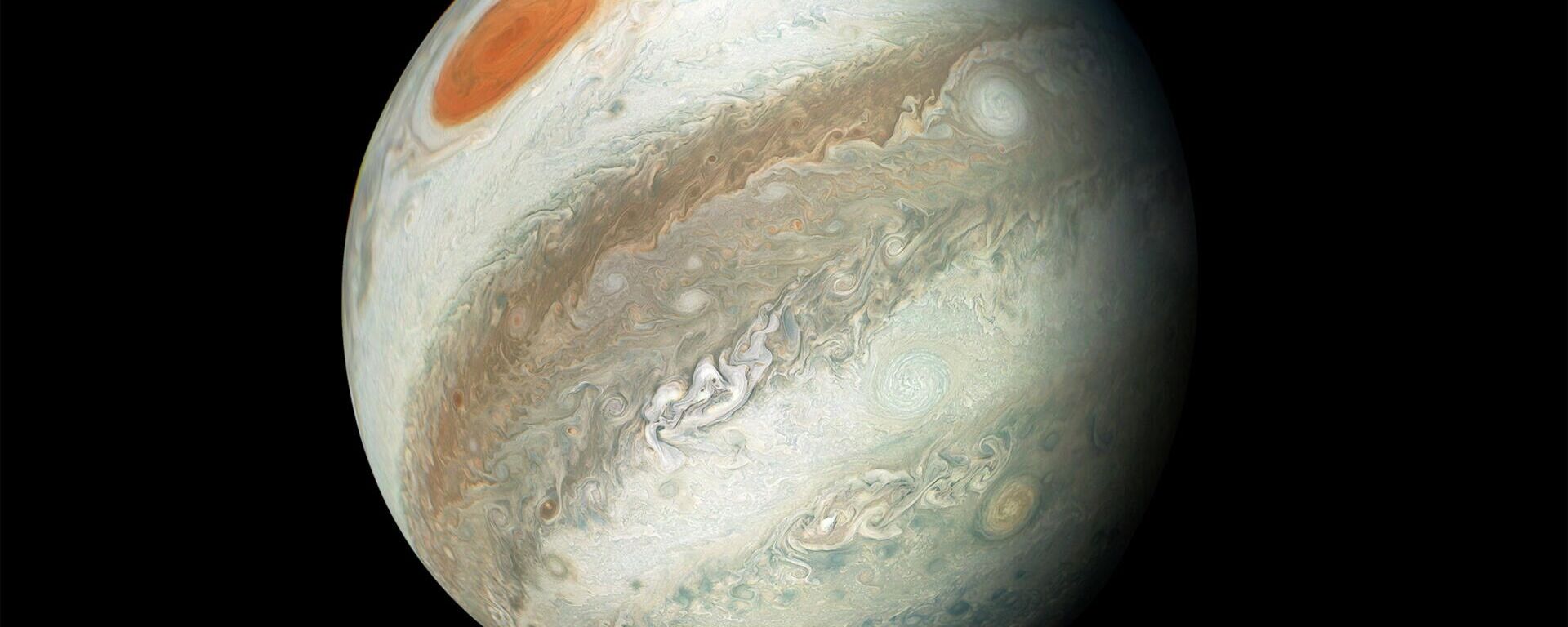https://en.sputniknews.africa/20231118/space-researchers-detect-green-night-on-mars-1063629934.html
Space Researchers Detect Green Nights on Mars
Space Researchers Detect Green Nights on Mars
Sputnik Africa
The ExoMars Trace Gas Orbiter is a joint mission between Russian Space Agency Roscosmos and the European Space Agency. It is designed to search the Martian... 18.11.2023, Sputnik Africa
2023-11-18T17:51+0100
2023-11-18T17:51+0100
2023-11-19T08:54+0100
mars
sun
space
astronomy
space exploration
science
https://cdn1.img.sputniknews.africa/img/07e7/0b/12/1063630356_0:543:1920:1623_1920x0_80_0_0_f132242ffe41ff433af7197f0f17541f.png
The European Space Agency's (ESA) ExoMars Trace Gas Orbiter mission has observed the Martian night sky glowing with a green light, visible to the human eye, while orbiting Mars.Jean-Claude Gerard, lead author of the new study and planetary scientist at the University of Liege (Belgium), explained that these results can guide future explorations of Mars. This type of nightglow is a relatively common phenomenon in the atmospheres of the solar system. Several things can cause our atmosphere to emit its own light at night, but few more than our own Sun.During the day, sunlight breaks molecules apart in a process called photodissociation. But on the night side of the atmosphere, away from the sun's radiation, loose atoms can recombine into molecules, releasing their excess energy in the form of photons.Gerard and his colleagues - intrigued by the discovery of nighttime infrared and ultraviolet and daytime visible and ultraviolet glow on Mars - studied the data from the Trace Gas Orbiter, which used its instruments to examine the edge of the atmosphere, looking for signs of nightglow at the longitudes of ultraviolet and visible wave. A visible nightglow was observed at the South Pole during the Martian winter between altitudes of 40 and 60 kilometers, according to Lauriane Soret, a researcher from the Laboratory of Atmospheric and Planetary Physics of the University of Liege, and part of the team that published the discovery in Nature Astronomy.The researchers explained that this is because oxygen atoms carried from the sunny Martian day combine into dioxygen (O2), emitting a glow in the process, bright enough to be seen from the ground.Atmospheric glows of all types are markers of atmospheric chemistry, circulation and processes. Mars has a very tenuous atmosphere, and finding out what is going on there would help understand why and where the rest went.The researchers suggested that the observations have paved the way for future global observations of the Martian atmospheric circulation with simpler and less expensive instruments.The space agency added that knowing how the atmosphere of Mars works is something that will benefit those future explorers.
https://en.sputniknews.africa/20230925/scientists-discover-biologically-essential-element-on-jupiters-moon-1062339860.html
mars
sun
space
Sputnik Africa
feedback@sputniknews.com
+74956456601
MIA „Rossiya Segodnya“
2023
Samantha Arias
https://cdn1.img.sputniknews.africa/img/07e7/0a/18/1063050346_115:0:834:719_100x100_80_0_0_1682778780537fd5aa8dd2536a012c1b.jpg
Samantha Arias
https://cdn1.img.sputniknews.africa/img/07e7/0a/18/1063050346_115:0:834:719_100x100_80_0_0_1682778780537fd5aa8dd2536a012c1b.jpg
News
en_EN
Sputnik Africa
feedback@sputniknews.com
+74956456601
MIA „Rossiya Segodnya“
Sputnik Africa
feedback@sputniknews.com
+74956456601
MIA „Rossiya Segodnya“
Samantha Arias
https://cdn1.img.sputniknews.africa/img/07e7/0a/18/1063050346_115:0:834:719_100x100_80_0_0_1682778780537fd5aa8dd2536a012c1b.jpg
mars, sun, space, astronomy, space exploration, science
mars, sun, space, astronomy, space exploration, science
Space Researchers Detect Green Nights on Mars
17:51 18.11.2023 (Updated: 08:54 19.11.2023) Samantha Arias
Producer / Podcast host
The ExoMars Trace Gas Orbiter is a joint mission between Russian Space Agency Roscosmos and the European Space Agency. It is designed to search the Martian atmosphere for methane and other trace gases that may indicate possible biological or geological activity.
The European Space Agency's (ESA) ExoMars Trace Gas Orbiter mission has observed the Martian night sky glowing with a green light, visible to the human eye, while orbiting Mars.
Jean-Claude Gerard, lead author of the new study and planetary scientist at the University of Liege (Belgium), explained that these results can guide future explorations of Mars.
"These observations are unexpected and interesting for future trips to the Red Planet," Gerard said.
This type of nightglow is a relatively common phenomenon in the atmospheres of the solar system. Several things can cause our atmosphere to emit its own light at night, but few more than our own Sun.
During the day, sunlight breaks molecules apart in a process called photodissociation. But on the night side of the atmosphere, away from the sun's radiation, loose atoms can recombine into
molecules, releasing their excess energy in the form of photons.
Gerard and his colleagues - intrigued by the discovery of nighttime infrared and ultraviolet and daytime visible and ultraviolet glow on Mars - studied the data from the Trace Gas Orbiter, which used its instruments to examine the edge of the atmosphere, looking for signs of nightglow at the longitudes of ultraviolet and visible wave.
A visible nightglow was observed at the South Pole during the Martian winter between altitudes of 40 and 60 kilometers, according to Lauriane Soret, a researcher from the Laboratory of Atmospheric and Planetary Physics of the University of Liege, and part of the team that published the discovery in
Nature Astronomy.
"This emission is due to the recombination of oxygen atoms created in the summer atmosphere and transported by winds to high winter latitudes, at altitudes of 40 to 60 km in the Martian atmosphere," informed Lauriane Soret.
The researchers explained that this is because oxygen atoms carried from the sunny Martian day combine into dioxygen (O2), emitting a glow in the process, bright enough to be seen from the ground.
Atmospheric glows of all types are markers of atmospheric chemistry, circulation and processes. Mars has a very tenuous atmosphere, and finding out what is going on there would help understand why and where the rest went.
The
researchers suggested that the observations have paved the way for future global observations of the Martian atmospheric circulation with simpler and less expensive instruments.
The space agency added that knowing how the atmosphere of Mars works is something that will benefit those future explorers.
"Understanding the properties of Mars' atmosphere is not only scientifically interesting but it is also key for missions to the Red Planet’s surface," the article explained.



